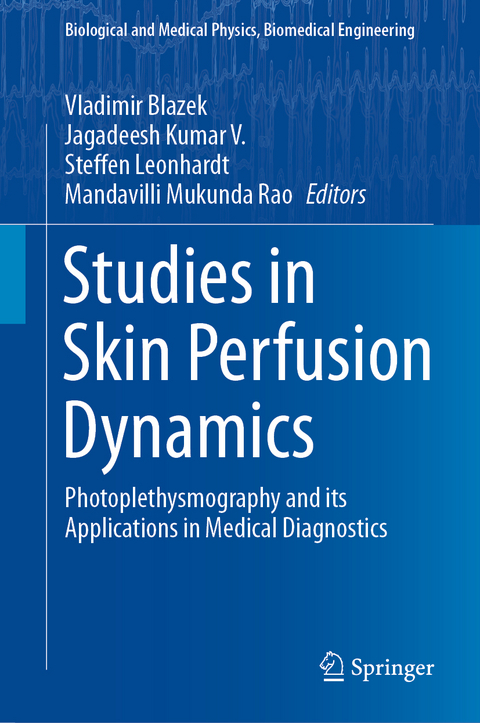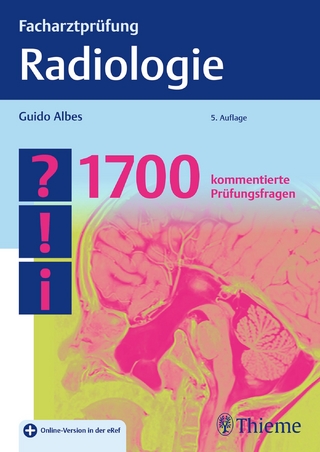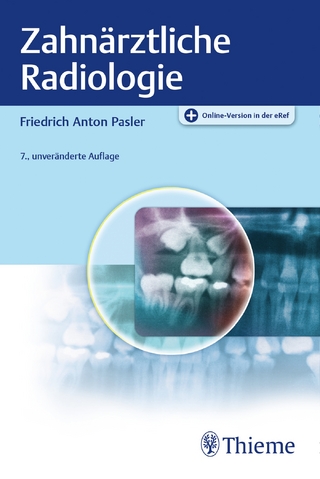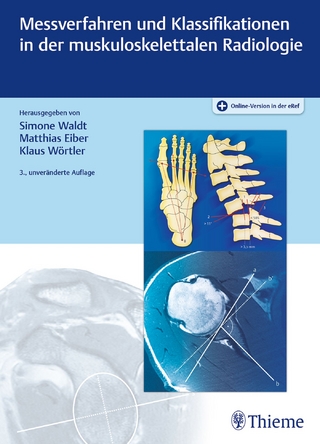
Studies in Skin Perfusion Dynamics
Springer Verlag, Singapore
978-981-15-5447-6 (ISBN)
Dr. Vladimir Blazek is Professor Emeritus for Measurement Techniques and Senior Advisor at the Chair for Medical Information Technology, Helmholtz-Institute for Biomedical Engineering, RWTH Aachen University, Germany. His areas of research interest include optical communication technology, optoelectronics in medicine, biomedical sensors, tissue optics, photon-biotissue interaction, modelling and simulation of human hemodynamics, optical imaging, 2D/3D measuring concepts & functional signal analysis. He actively works in European integration & co-operation in the field of university education and is the Rector’s delegate for university cooperation between Aachen and Prague. He has over 300 publications in books, journals and conference proceedings, and close to 50 patents and patent registrations in Germany and abroad. Since 2014 is Dr. Blazek also a member of the Czech Institute of Informatics, Robotics and Cybernetics (CIIRC), established at the Czech Technical University(CTU) in Prague, Czech Republic, in 2013. Dr. V. Jagadeesh Kumar received his B.E. Degree in Electronics and Telecommunication Engineering from the University of Madras in 1978, and his M.Tech. and Ph.D degrees in Electrical Engineering from the Indian Institute of Technology Madras, in 1980 and 1986, respectively. He is presently a faculty member in the department of Electrical Engineering and dean at IIT Madras. He was a BOYSCAST Fellow at King’s College London during 1987-88. He was a DAAD fellow at the Technical University of Braunschweig, Germany during 1997. He worked as a Visiting Scientist at the RWTH Aachen University, Germany during 1999, 2010, 2013 and 2019. He holds two patents and has published 30 papers in international journals and presented papers at several conferences. His teaching and research interests are in the areas of Measurements, Instrumentation and Signal Processing. Dr. SteffenLeonhardt received his M.S. in Computer Engineering from the University of Buffalo (SUNY), NY, the Dipl.-Ing. in Electrical Engineering and the Dr.-Ing. degree in Control Engineering from Technical University of Darmstadt, Darmstadt, Germany, and the M.D. degree in Medicine from J. W. Goethe University, Frankfurt, Germany. Prior to returning to academia, he worked for almost 5 years at the R&D department of Dräger Medical GmbH Co KGaA, Lübeck, Germany. In 2003, he was appointed Full Professor and Head of the Philips endowed Chair of Medical Information Technology at the Helmholtz-Institute for Biomedical Engineering, RWTH Aachen University, Germany. In 2018, he received a honoray doctorate degree from Czech Technical University in Prague, Czech Republic, and was appointed Distinguished Professor at the Indian Institute of Technology Madras. Dr. Leonhardt´s research interests include physiological measurement techniques, personal health care systems, cyber-medical systems andfeedback control systems in medicine. Dr. Mandavilli Mukunda Rao was a Post-doctoral Fellow at the University of Illinois, USA. He is a retired professor of of Electrical Engineering at the Indian Institute of Technology Madras where he was teaching in the area of Laser and Optical Communication. He has published a book on optical communication and several research papers in reputed journals. His research interests include Optical Non-invasive Diagnostics. He spent several years at the RWTH Aachen University in Germany, first as DAAD Fellow (1970-1972) and then as Alexander von Humboldt Fellow (1978-1979). He is currently an Honorary Research Professor at Sri Ramachandra University, Chennai.
Rhythmical phenomena in dermal perfusion in vivo – Historical re-marks and modern measuring strategies using noninvasive optoelec-tronic sensor concepts.- Influence of controlled breathing (Pranayama) on dermal perfusion.- Optical sensing strategies for skin oxygen saturation monitoring.- Low frequency blood volume rhythms in the skin perfusion obtained by optical sensing.- Synergetic interpretation of patterned vasomotion activity in micro vascular perfusion: application of objective recording of subjective responses to pain.- A self-organized rhythm in peripheral effectors: the intermediary rhythm appears as 0.15 Hz-Band activity.- Photon-tissue interaction modelled by Monte Carlo method for optimized optoelectronic sensor concepts.- Frontiers in contactless space- and time-resolved skin perfusion detec-tion using Photoplethysmography Imaging (PPGI).- Some clinical applications of functional PPGI perfusion mapping in derma-tology.- Motion artefact reduction in PPG signal.
| Erscheinungsdatum | 29.01.2021 |
|---|---|
| Reihe/Serie | Biological and Medical Physics, Biomedical Engineering |
| Zusatzinfo | 90 Illustrations, color; 48 Illustrations, black and white; XV, 238 p. 138 illus., 90 illus. in color. |
| Verlagsort | Singapore |
| Sprache | englisch |
| Maße | 155 x 235 mm |
| Themenwelt | Medizinische Fachgebiete ► Radiologie / Bildgebende Verfahren ► Radiologie |
| Medizin / Pharmazie ► Physiotherapie / Ergotherapie ► Orthopädie | |
| Naturwissenschaften ► Physik / Astronomie ► Angewandte Physik | |
| Technik ► Medizintechnik | |
| ISBN-10 | 981-15-5447-1 / 9811554471 |
| ISBN-13 | 978-981-15-5447-6 / 9789811554476 |
| Zustand | Neuware |
| Informationen gemäß Produktsicherheitsverordnung (GPSR) | |
| Haben Sie eine Frage zum Produkt? |
aus dem Bereich


